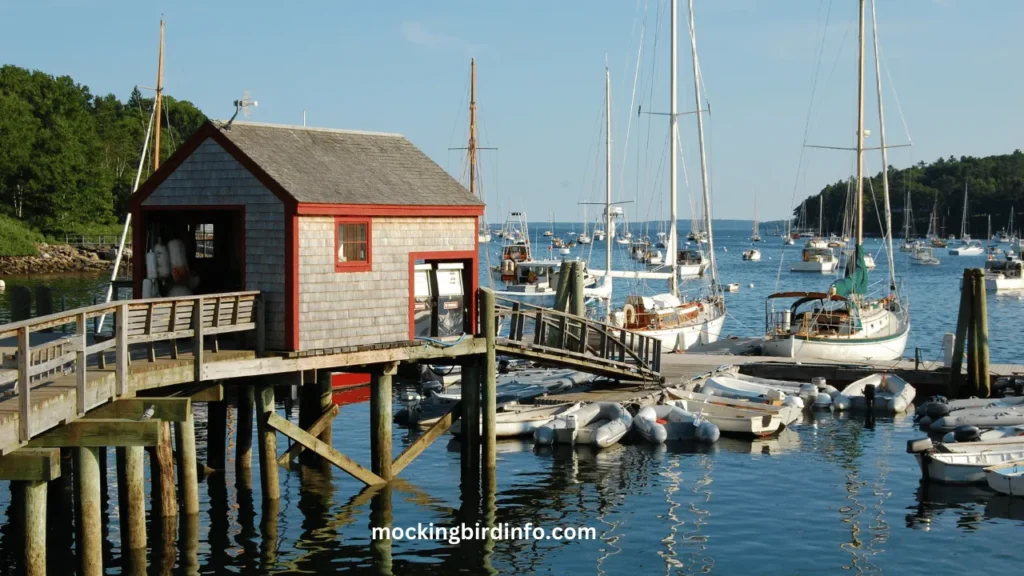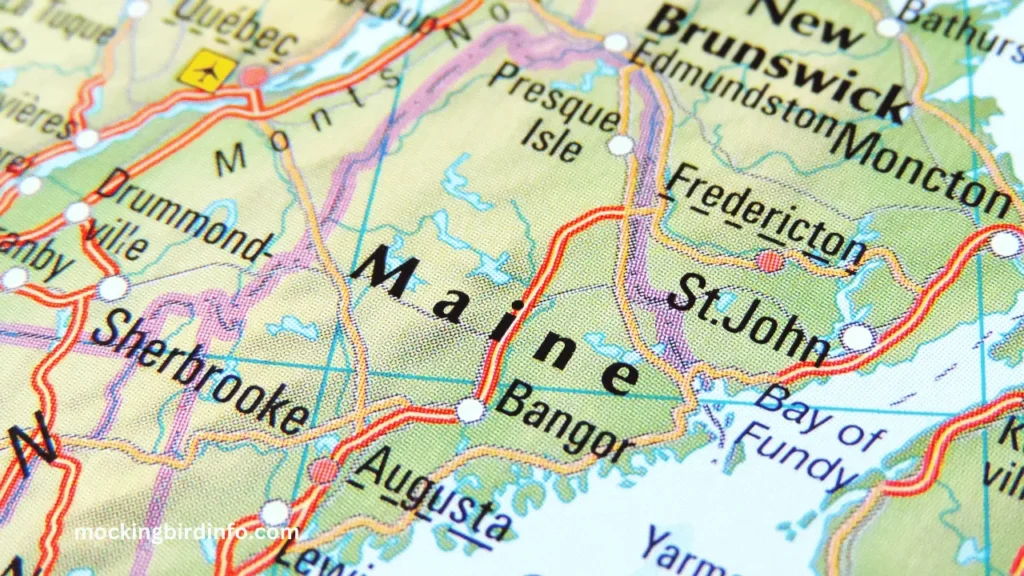Maine, with its rich forests, rugged coastline, and diverse wildlife, is home to many bird species that bring the state’s natural beauty to life.
However, one bird that you might not expect to find in the Pine Tree State is the mockingbird—a species known for its vibrant song and striking ability to mimic a variety of sounds.
For most of us, the thought of mockingbirds conjures images of southern states like Texas or Florida, where they are more common. So, do mockingbirds live in Maine, and if so, what does that mean for the state’s ecosystem?
Despite not being native to Maine, mockingbirds have established a presence in the state. While they may not be as widespread as in warmer southern regions, these birds have found their place in specific parts of Maine.
This article will delve into the fascinating story of how mockingbirds arrived in the state, where they are currently found, and the potential impacts their presence has on local ecosystems.
Understanding this phenomenon is key for anyone interested in birdwatching, wildlife conservation, or the ongoing changes in Maine’s biodiversity.
Whether you’re a Maine resident curious about these fascinating birds or someone interested in the broader ecological implications of introducing new species, this post will explore everything you need to know about mockingbirds in Maine.
From their introduction to their ecological role, we’ll uncover the mystery of these adaptable birds that seem to thrive in environments far beyond their native habitat.

Contents
History of Mockingbird Introductions
Mockingbirds are not native to Maine, but their presence in the state can be traced back to early attempts to introduce them. These efforts were made with the intention of enriching the state’s bird diversity and providing birdwatchers with new species to admire.
It wasn’t until the mid-20th century that the first known sightings of mockingbirds in Maine were recorded. The birds were typically brought in from southern states where they naturally thrive, but the question was always whether they would adapt to Maine’s cooler climate and more challenging environment.
Over time, some of these introduced populations managed to establish themselves. The success of the mockingbirds’ settlement in Maine was facilitated by the availability of food sources, particularly berries, and the moderate climate of southern Maine.
By the late 20th century, mockingbirds had begun to breed and form stable populations, primarily in the coastal regions and urban areas. The growth of these populations can largely be attributed to the birds’ high adaptability, which allows them to thrive in non-native habitats.
Several factors have contributed to the mockingbird’s successful establishment in Maine. These include the absence of natural predators, the availability of urban habitats, and the abundance of food resources such as insects and berries.
As these birds adapted to their new environment, they began to spread to new areas, solidifying their place in the state’s bird population.
Current Distribution in Maine
Today, mockingbirds are found most frequently in southern Maine, particularly in urban areas and along the coastal regions. This part of the state offers the mildest climate, which is more conducive to the mockingbird’s survival.
Cities like Portland and its surroundings have become hotspots for these birds due to their urban environments, which mimic the types of environments that mockingbirds typically prefer.
These birds have been observed in parks, gardens, and even residential neighborhoods, where they find ample food and nesting sites.
While mockingbirds are more abundant in southern Maine, their population density decreases as you move further north. The colder, harsher winters of northern Maine make it difficult for these birds to survive, as they are not naturally adapted to endure prolonged cold temperatures.
However, during the summer months, some mockingbirds have been observed in the interior regions of Maine, although their presence is far less common.
Seasonal migration patterns also play a role, as mockingbirds tend to migrate south for the winter, returning in the spring as temperatures warm.
As climate patterns shift, mockingbirds are likely to expand their range further north. Warmer winters and changing ecosystems in Maine could allow mockingbird populations to increase and spread into new areas, particularly in regions where food sources and suitable habitats exist.
This potential expansion is an important consideration for future conservation efforts and ecological monitoring.

Impact on Native Ecosystems
The introduction of mockingbirds to Maine has led to several ecological changes, some of which raise concerns for native species.
Mockingbirds are highly territorial birds, often aggressive when defending their nesting sites. This aggressive behavior can lead to competition with native species for resources, particularly nesting locations.
Native birds that share similar habitats, such as songbirds and sparrows, may be displaced by mockingbirds, whose assertive nature allows them to dominate available spaces.
In addition to competing for nesting sites, mockingbirds could potentially predate on native bird eggs or young chicks, posing a threat to local species that rely on these habitats for breeding.
While mockingbirds are primarily omnivorous and feed on insects, berries, and fruits, there is evidence suggesting that they may also prey on smaller birds’ eggs, further impacting local populations. However, research on the exact extent of these predatory behaviors remains limited.
Furthermore, mockingbirds have been known to alter habitats in ways that can affect the entire ecosystem. As they adapt to urban and suburban environments, they may cause disruptions in the natural balance of food webs.
By thriving in these environments, mockingbirds could potentially displace native species, reducing biodiversity and altering the dynamics of local ecosystems.
Conservation Considerations
As mockingbird populations grow in Maine, it becomes increasingly important to monitor their impact on native ecosystems. Ecological monitoring helps to assess the effects of these birds on local biodiversity and identify areas where conservation efforts may be needed.
For example, specific regions could benefit from the restoration of native habitats or the introduction of natural predators to control mockingbird numbers and reduce competition with other species.
Public awareness also plays a significant role in the management of non-native species like the mockingbird. Educating local communities about the potential impacts of releasing non-native birds into the wild is essential in preventing the introduction of other species that could harm the local ecosystem.
Additionally, conservation strategies focused on habitat restoration, predator control, and species protection can help mitigate the negative effects of mockingbird introductions.
Collaborative efforts between wildlife conservation groups, government agencies, and local communities will be critical in maintaining Maine’s delicate balance of native species.
By developing strategic management plans, these groups can help ensure that Maine’s ecosystems remain healthy and resilient in the face of changing species populations.
Conclusion
In conclusion, while mockingbirds are not native to Maine, their successful establishment in the state highlights the adaptability of these birds.
Despite initial challenges, mockingbirds have managed to thrive in southern Maine, particularly in urban and coastal areas. However, their presence also raises important ecological concerns, including competition with native species and potential impacts on local habitats.
As the climate continues to change, mockingbirds may expand their range further into Maine, increasing the need for ongoing monitoring and conservation efforts.
Ensuring the health of Maine’s ecosystems requires understanding the implications of introducing non-native species and taking action to protect native wildlife.
Ultimately, the story of mockingbirds in Maine serves as a reminder of the complex interplay between species and the environment. By promoting responsible conservation practices and encouraging public engagement, we can work together to protect Maine’s diverse and vibrant ecosystems for future generations.
FAQs
1. Are mockingbirds native to Maine?
No, mockingbirds are not native to Maine. They were introduced to the state in the mid-20th century.
2. Where can mockingbirds be found in Maine?
Mockingbirds are most commonly found in southern Maine, particularly in urban areas and along the coastal regions.
3. Do mockingbirds migrate in Maine?
Yes, mockingbirds migrate south for the winter and return to Maine in the spring.
4. How have mockingbirds impacted Maine’s native birds?
Mockingbirds compete with native birds for nesting sites and resources, and there is some evidence suggesting they may prey on eggs or young chicks.
5. Can mockingbirds adapt to Maine’s climate?
Yes, mockingbirds have adapted to Maine’s climate, especially in coastal areas where temperatures are milder.
6. What do mockingbirds eat in Maine?
Mockingbirds primarily feed on insects, berries, and fruits in Maine.







